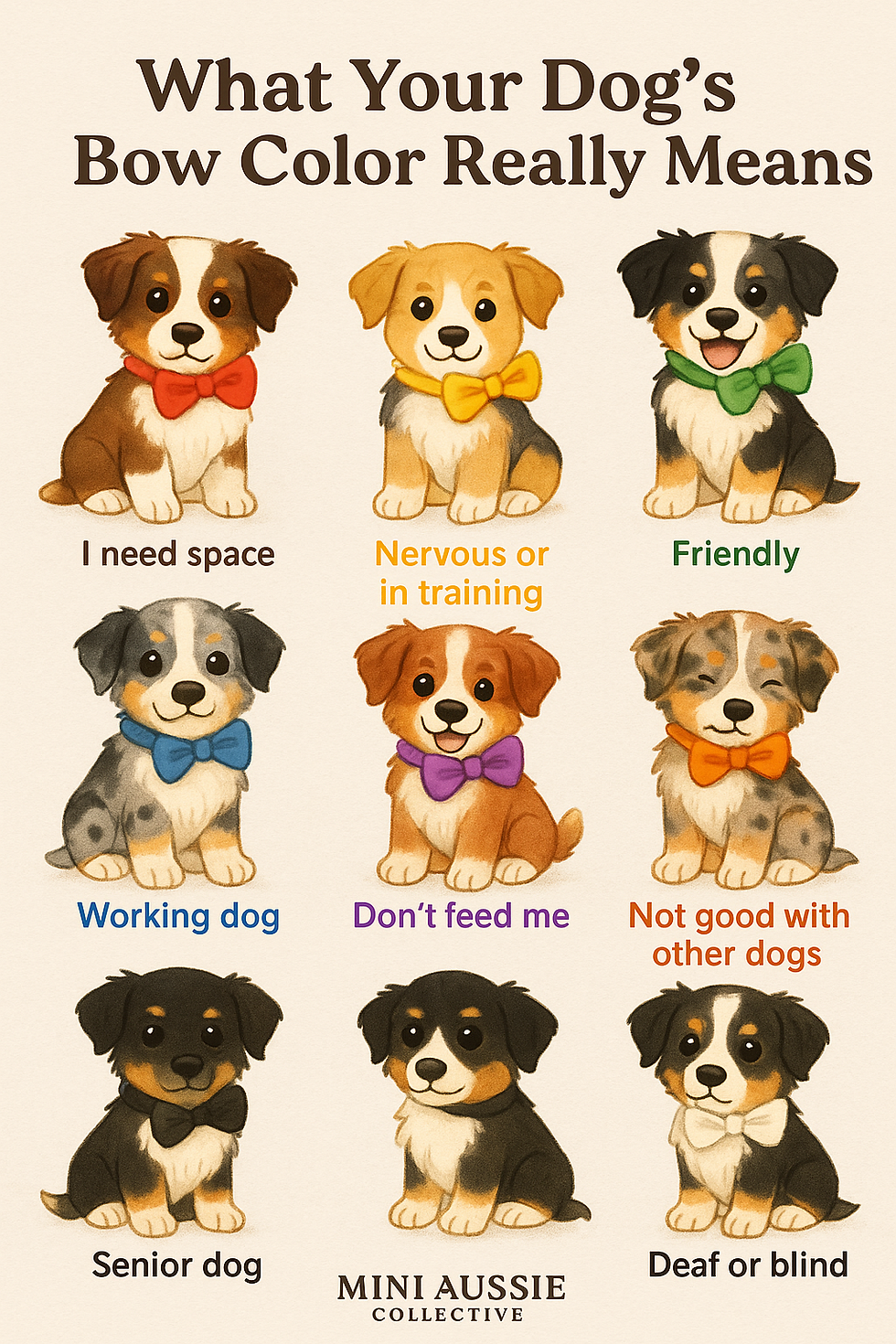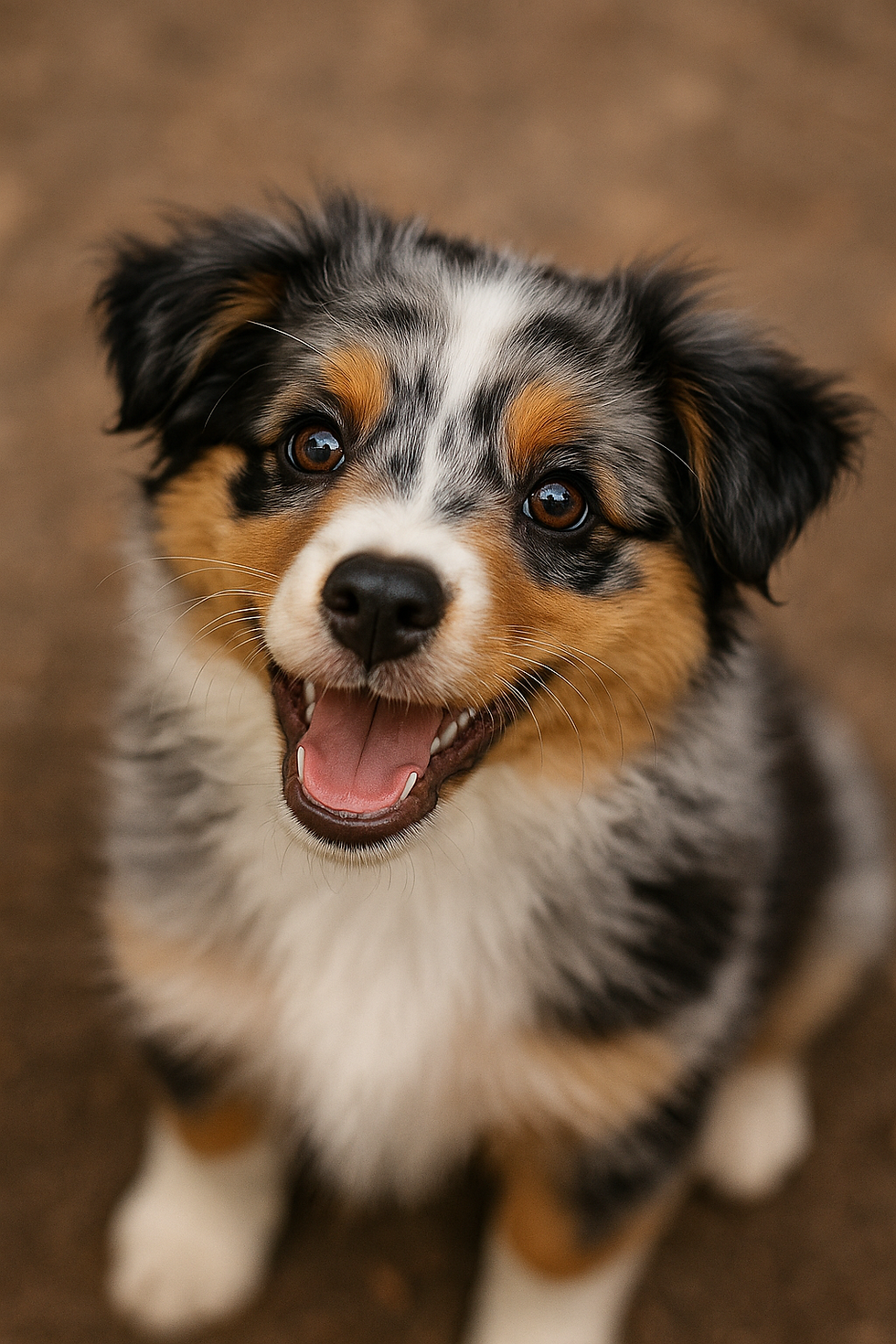🎀 What Your Dog’s Bow Color Really Means
- Mini Aussie Collective

- Jul 7
- 3 min read
Updated: Jul 13
A MAC Guide to Understanding Your Pup’s Needs at a Glance
Published by Mini Aussie Collective
At Mini Aussie Collective (MAC), we believe that communication is everything—especially when it comes to our four-legged friends. That’s why we’re huge fans of the growing trend of color-coded dog bows and bandanas. These aren’t just cute accessories—they’re part of a thoughtful system that helps dogs tell the world how they’re feeling.
Whether you’re at the park, walking your neighborhood, or just scrolling through photos of adorable pups online (we see you), it helps to know what these colors mean. Understanding these simple visual cues can prevent misunderstandings, reduce stress, and support a more respectful, dog-friendly world.
🟥 Red – I need my space.

This color means the pup prefers distance. Whether they’re recovering from something, anxious around strangers, or just having a "do not disturb" day, red signals: please give me room.
🟨 Yellow – I’m in training.

These dogs are learning, practicing commands, or being socialized. They’re working hard and doing their best—just like us humans! Give them some space to focus and always ask before approaching.
🟩 Green – I’m friendly and ready for cuddles.

The social butterflies of the dog world. Dogs wearing green bows or bandanas are open to meeting new people and pups. Expect tail wags, play bows, and maybe a few kisses.
🔵 Blue – I’m on duty.

This color is common among service dogs and working breeds. It signals that the dog is focused and not to be distracted. Whether they’re helping their human or just naturally alert (hello, herders!), give them space to do their job.
🟣 Purple Bow: “Please Don’t Feed Me”

This is often used for dogs with dietary restrictions or allergies. That treat in your pocket might be dangerous for them.
🟠 Orange – Not a fan of other dogs right now.

Orange means, “please don’t let your dog rush me.” These pups may love people but are still adjusting to other dogs—or just need space today. Respect the orange and keep your distance.
⚫ Black – I’m a senior dog.

Dogs wearing black bows are the wise elders of the canine community. They may not want to romp like a puppy, but they appreciate calm company and gentle pets. Let them set the pace.
⚪ White Bow: “Deaf or Blind”

A white accessory typically means the dog has limited or no hearing and/or vision. Approach gently and don’t startle them.
🐾 Why Does This Matter?
Color-coded bows and bandanas are more than just cute—they’re communication tools. They help dogs advocate for themselves, especially in busy environments. And they help humans make better choices about when (and how) to approach.
At MAC, we’re proud to raise awareness for this growing movement. Our Mini Aussies sometimes wear these colors as part of their early training and socialization process. The more people who understand this system, the safer and more respectful our dog-loving communities will become.
📌 Save & Share This Guide
Want to spread the word? Share this blog post and tag us at @MiniAussieCollective.
Let’s build a better world for our dogs—one bow at a time.

It helps to know what these colors mean. Understanding these simple visual cues can prevent misunderstandings, reduce stress, and support a more respectful, dog-friendly world.



Comments